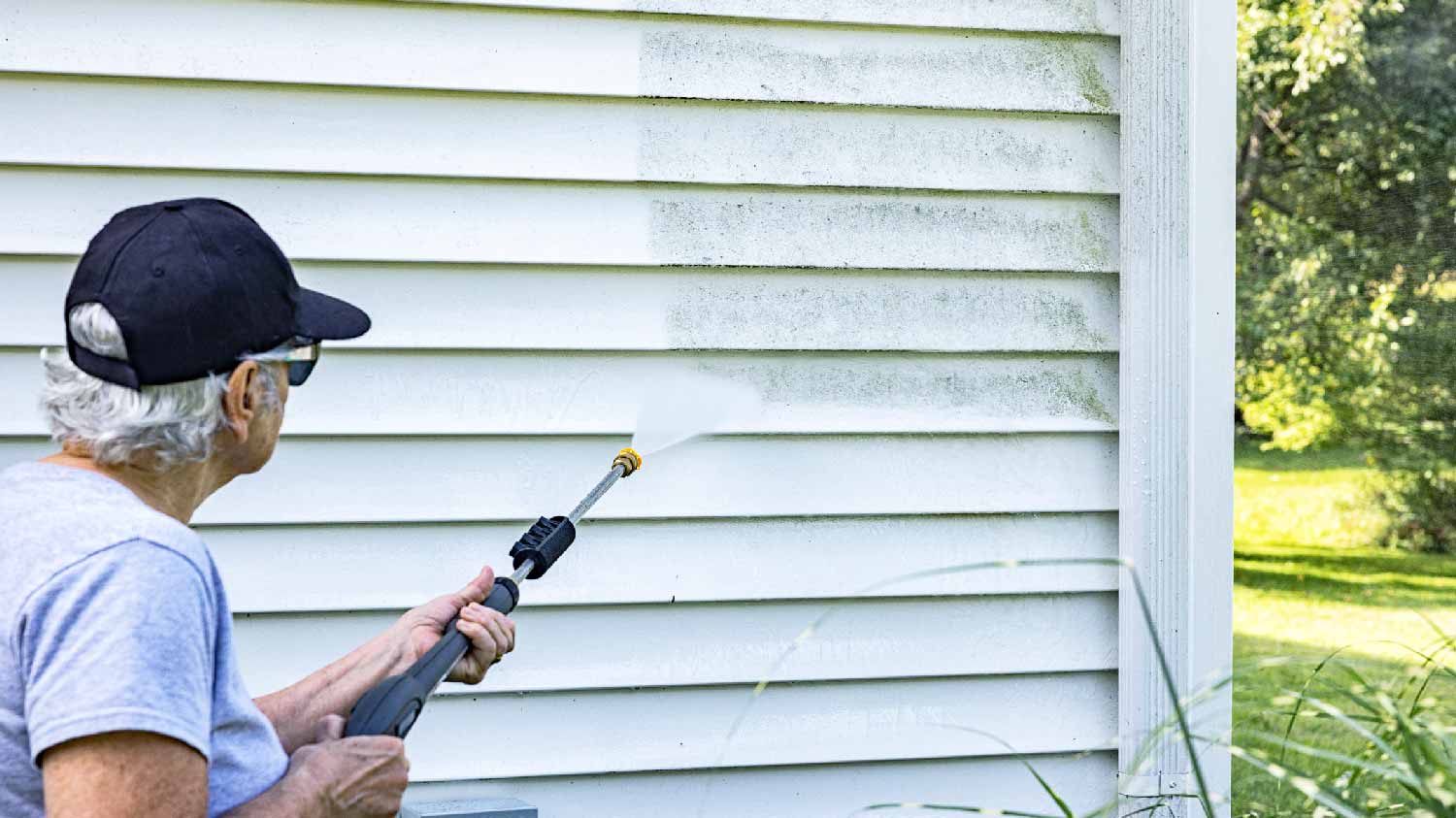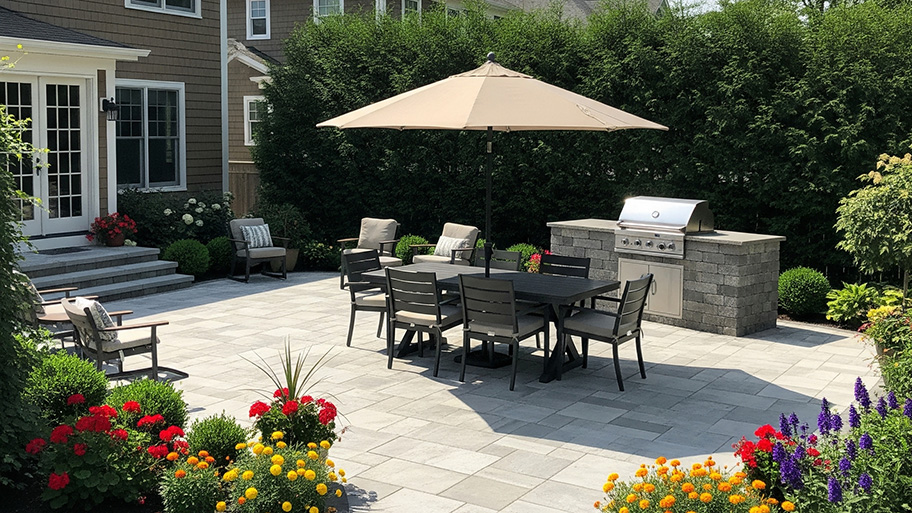
The cost to pressure wash a deck depends on its size, condition, material, and whether you DIY the job. Help set your budget with this cost guide.
Washing a house is all about temperature


Spring is the best time to pressure wash a house in most climates.
Fall is another good time to pressure wash if trees do not surround your home.
Avoid pressure washing in freezing temperatures.
Excessive summer heat can cause stains and streaks while your house dries.
Hiring a pro reduces the risk of personal injury and property damage.
Many homeowners recognize pressure washing as one of the most efficient and effective ways to clean a house's exterior. However, it's not as obvious exactly when to wash, as every season comes with its own unique challenges. The simple answer is that spring is the best time to pressure wash most parts of a house. Even so, there are other factors to weigh, which we break down in this guide.

You should pressure wash your house once a year. The best time to wash a house exterior is during spring when temperatures are between 40 and 75 degrees Fahrenheit. Spring is ideal because wet winter weather from the previous season may have caused dirt, mold, and mildew to build up in vulnerable areas. This includes roofs, gutters, decks, and siding.
You can also pressure wash during milder temperature days in the fall, but leaves and other debris may fall onto your house right after you've washed it. This can be a good time of year to clean hard surfaces such as driveways, patios, porches, and stone features.
You can pressure wash your home anytime from dawn to dusk, as long as there's enough visibility to see spots that may need to be cleaned. If you avoid extreme wind or rain, washing during any weather is also acceptable.

Several things impact when and how often you should pressure wash your house, including the climate, temperature, and other environmental factors.
Homes in humid climates may be more susceptible to mold and mildew growth. If you see a visible buildup of grime on your home, it's a good idea to pressure wash at the next safe opportunity, even if you already washed earlier that year.
When temperatures exceed 75 degrees Fahrenheit, heat and direct sunlight can cause stains and streaks to form after pressure washing. On the other extreme, temperatures below 40 degrees Fahrenheit create a freezing risk when washing, which can cause more harm than good.
Environmental factors that can cause excess buildup include leafy trees, sap, pollen, heavy storms, nearby construction, vehicle exhaust, and forest fires. These factors may cause you to pressure wash more frequently than once yearly.
You should not pressure wash your house during periods of extreme high or low temperatures or during any major weather events. Pressure washing when the outdoor temperature is below 40 degrees Fahrenheit can leave ice behind, posing safety risks.
Meanwhile, pressure washing under intense sunlight when temperatures are above 75 degrees Fahrenheit can cause stains and streaks to form and may interfere with the performance of cleaning chemicals.
The cost to pressure wash a house ranges between $200 and $420 on average, depending on the extent of the job. If you're paying to have your entire home pressure washed, it could cost $700 or more.
Pressure washing pros charge $25 to $100 per hour, while renting a pressure washer only costs $35 to $175 per day. You can also purchase your own pressure washer for $100 to $1,000, depending on the quality of the machine. Investing more in a high-quality appliance may be worthwhile since you’ll only have to pay once for a washer that lasts many years.
Pressure washing can be a relatively easy DIY job if you know how to pressure wash your house safely. Understand the strength of your machine and the limits of your siding, roofing, and decking materials.
Damage from high-pressure water on soft surfaces like wood can inadvertently compromise your home's protection against moisture, pests, mold, mildew, and other dangers. Too much pressure can strip paint and finish, loosen siding to create gaps, leave damaged seals on windows and doors, and crack or splinter wood.
Pressure washing also comes with personal risk, since the strong spray can injure you or others if it touches your skin. To avoid these risks to yourself and your home, hire a local pressure washing pro with the proper training and safety equipment. A pro will also ensure that no spot gets missed.
From average costs to expert advice, get all the answers you need to get your job done.

The cost to pressure wash a deck depends on its size, condition, material, and whether you DIY the job. Help set your budget with this cost guide.

The cost to pressure wash a patio depends on the size of the surface and the type of patio you have, as well as whether you DIY or hire a pressure washing pro.

Pressure washing your fence can restore its appearance and keep your home looking great. Learn how much it costs based on factors like square footage and material.
Pressure washers have many uses from cleaning patios to scrubbing cars. This guide covers the most common pressure washer uses to help you make the most of this tool.

Does your pressure washer lack pressure? Or will it not start at all? Know who repairs power washers and who to call to get yours fixed.

Your house sees a lot of rain, snow, dirt, and debris over the seasons. So, how often should you power wash your house? Find out with this guide.